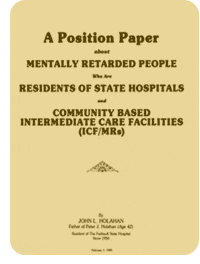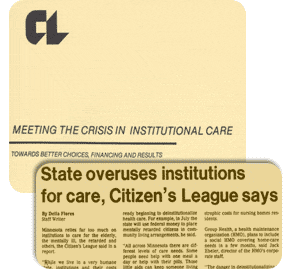AFSCME called for state-operated services.
John Holahan, a concerned parent and a founder of the Arc, submitted a paper asking how it was possible to close the state hospitals and limit the number of beds when there was a waiting list for community services.
The position paper also stated that community programs have high turnover, poor training, no backup, poor support and high burnout.

Holahan's paper was critical of any closures until adequate community services were available.
Meanwhile, the Citizens League studied five different groups, including people with developmental disabilities. It found that Minnesota had overbuilt, had under-relied on out-of-home placements, and had not fully developed family support and apartment living options.
Ultimately, this study pointed out that there was mounting evidence to support use of community services.
In March 1984, Minnesota had 337 community intermediate care facilities serving 5,180 people.

A Citizens League study showed that Minnesota relied too heavily on institutional care and had not fully developed other care options.
Video: Len Levine served as Commissioner of the Department of Human Services and worked on the transition to state operated community services.
Part 1: Transitioning into the Community
Part 2: The Team of Governor Rudy Perpich and DHS Commissioner Len Levine
Part 4: DHS Commissioner Len Levine Recalls Changes in the 1980s







